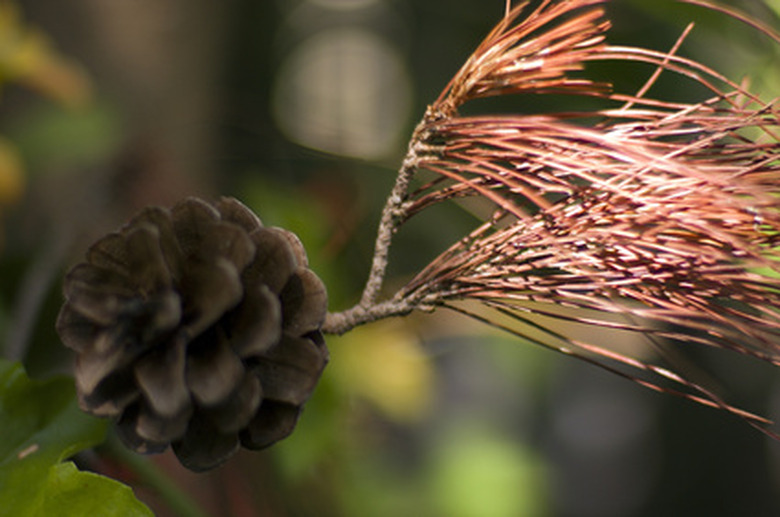Growth Rates For Red Cedar Trees
It can be tough to be pinpoint growth rate for red cedars (Juniperus spp.) in your area because numerous species and cultivars are part of the red cedar tree group off plants. North American red cedar trees are not actually "true" cedar trees (in the Cedrus genus) but junipers in the Juniperus genus or arborvitae in the Thuja genus. Growth rate depends not only on species and cultivar but also on growing conditions in their environment. Though trees such as Western red cedar and Eastern red cedar are different species, they have somewhat similar growth rates because they are large trees native to environments with comparable climates and moisture content.
Tip
The growth rate of red cedars is moderate to fast and varies slightly based on cedar type. Eastern red cedars grow by 12 to 24 inches in height per year for their first 30 years, while Western red cedars can add 24 to 30 inches of height per year.
Growth of Eastern Red Cedars
Growth of Eastern Red Cedars
Eastern red cedar (Juniperus virginiana, zones 2-9) is a species of tree native to Eastern and Central North America. The Eastern red cedar has a moderate growth rate, and can add up to 24 inches of height per year. Mature trees aged 50 and older are usually 40 to 50 feet tall though some may grow much taller. Thus, growth rates slow considerably after the first 30 years of a specimen's life.
Growth of Western Red Cedars
Growth of Western Red Cedars
Western red cedar (Thuja plicata, zones 5-7) is a species of tree native to the West Coast of the United States and Canada. The growth rate of the Western red cedar is classified as fast. These trees can add 24 to 36 inches of height per year. Trees are generally 70 feet tall at maturity, though old growth specimens can be much taller. Old growth trees are those believed to be at least 1,000 years old. Thus, while Western red cedar reaches a mature height at a moderate growth rate, it may continue at a slow growth rate for centuries.
Red Cedar Growing Conditions
Red Cedar Growing Conditions
Western red cedar is described as an adaptable species. These trees can adapt to a number of growth environments, including shade growth beneath large, established trees. In such conditions, growth rate is slower but the specimen will grow steadily over long periods.
The Eastern red cedar has an average moderate growth rate, though it can grow more quickly or slowly under certain circumstances. Conditions affecting Eastern red cedar growth include soil and site quality, competition from other species and the density of specimens.
Red Cedar Reproduction
Red Cedar Reproduction
Mature Eastern red cedar produces a good crop of seed every two to three years. When grown from seed in nurseries, Eastern red cedar will take one to two years to reach an appropriate size for replanting. Trees taking root in the wild will develop large, strong root systems in rocky and shallow soil. However, specimens in such conditions will take longer to grow upward than those in standard soil.
Western red cedar trees begin producing cones between 10 and 20 years of age. Optimal cone crops begin when trees reach 70 to 80 years and can continue for centuries. Red cedar will grow well in soils with high mineral content.
